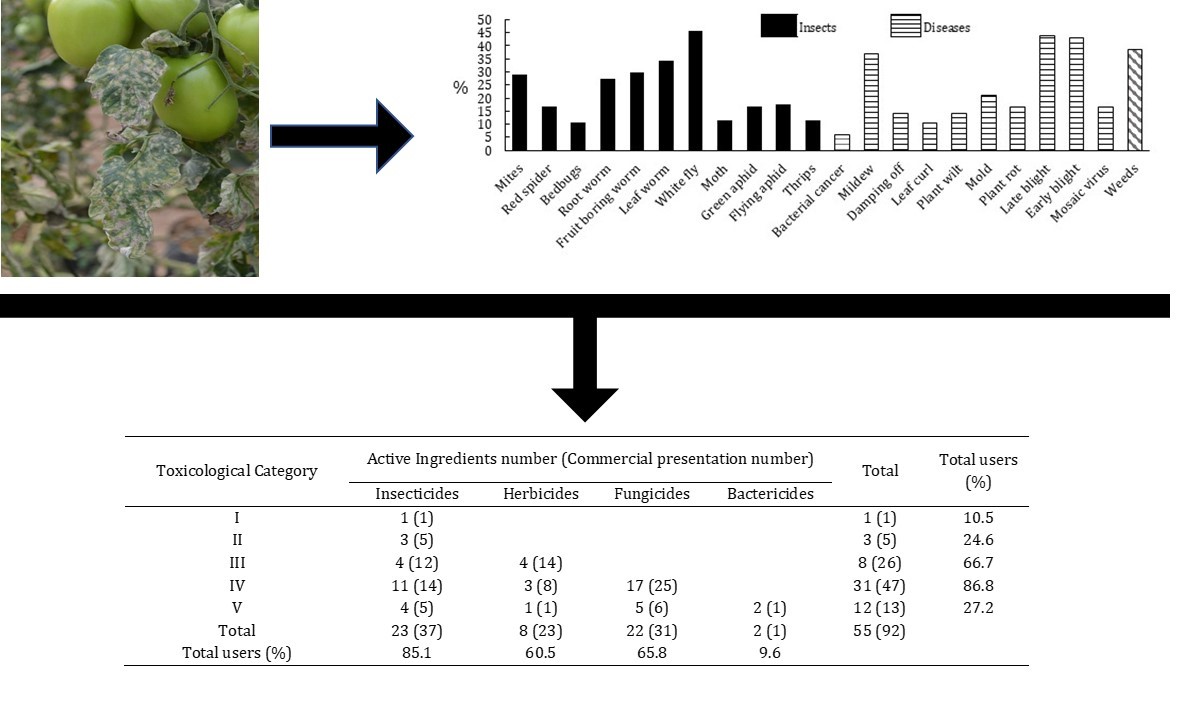Health risk due to pesticide exposure in tomato (Solanum lycopersicum) crop in Oaxaca, Mexico
DOI:
https://doi.org/10.48162/rev.39.107Keywords:
tomato, pest, pesticides exposure, health, acute pesticide poisoningAbstract

Pesticides increase agricultural productivity worldwide. Unfortunately, these pesticides put public health and the environment at risk. This study aimed to document the presence of pests and diseases in tomato crops, the range of pesticides used, and acute pesticide poisoning symptoms (APP) among producers from various municipalities in the State of Oaxaca, Mexico. Surveys were applied from 2019 to 2021. The information was examined through a descriptive analysis. The Mann-Whitney U test and Spearman’s Rho correlation established differences between groups and associations. The main pests were the white fly, various worms, blight, mildew, and weeds. Fifty-five active ingredients (AI) were identified, predominantly Toxicological Category (TC) IV, such as insecticides and fungicides, as well as TC III herbicides. Factors associated with a greater diversity of AI were <10 years in agricultural activity, high presence of pests and diseases, and surfaces >1 ha. Up to six APP symptoms occurred in 60.6% of the producers, and 58.2% of the AI identified are considered hazardous pesticides.
Highlights:
- Fifty-five active ingredients were identified in tomato crops, predominantly insecticides and fungicides.
- More than fifty percent of the active ingredients identified are considered hazardous pesticides.
- Up to six acute pesticide poisoning symptoms occurred in 60.6% of the producers.

Downloads
Published
Issue
Section
License
Copyright (c) 2018 Revista de la Facultad de Ciencias Agrarias UNCuyo

This work is licensed under a Creative Commons Attribution-NonCommercial-ShareAlike 3.0 Unported License.
Aquellos autores/as que tengan publicaciones con esta revista, aceptan las Políticas Editoriales.



